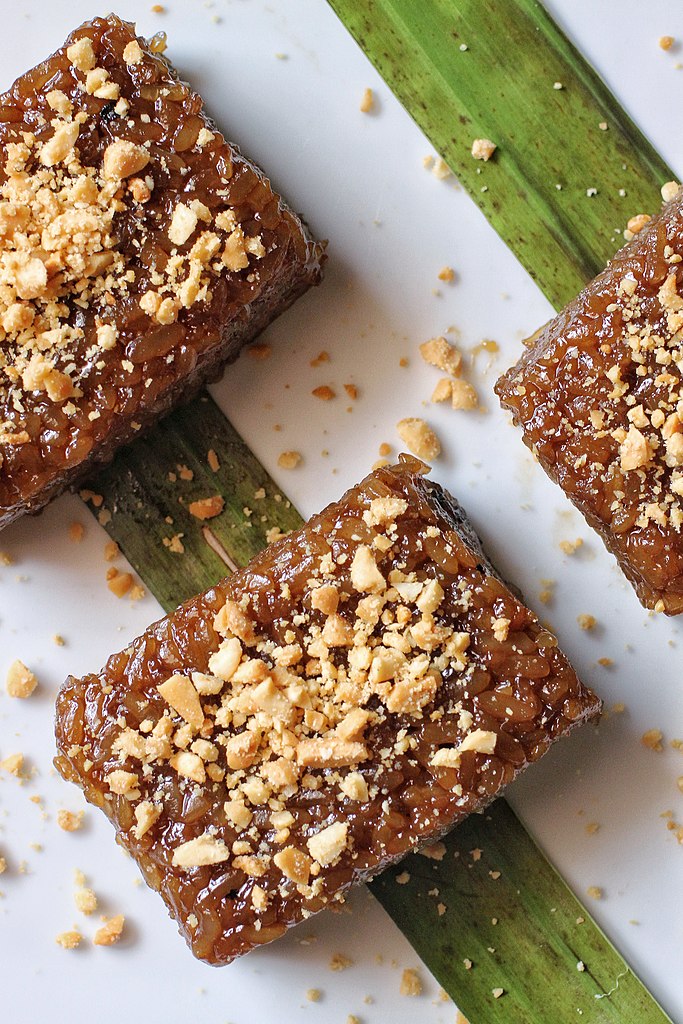 |
| Herbertkikoy, CC BY-SA 4.0, via Wikimedia Commons |
Introduction
Biko, a luscious Filipino rice cake, represents a harmonious blend of flavors and textures. This article takes you on a journey to uncover the origins of Biko, delve into the steps to prepare this sweet delicacy, and answer common questions about its preparation and enjoyment.
Biko: A Tapestry of Filipino Culinary Heritage
Unraveling Its Origins
Biko's roots are firmly planted in Filipino culture, tracing back to traditional celebrations and family gatherings. This sweet rice cake, with its inviting aroma and indulgent taste, has become a staple in Filipino cuisine, cherished for its simplicity and richness.
Key Ingredients:
- Glutinous Rice:
- The main component, glutinous rice, contributes to the cake's chewy and sticky texture.
- Coconut Milk:
- Coconut milk adds a creamy and tropical essence to Biko, enhancing its overall richness.
- Brown Sugar:
- Brown sugar imparts a deep, caramelized sweetness, elevating the flavor profile of the rice cake.
Crafting Biko: Step by Step
Instructions:
- Prepare the Rice:
- Wash and cook glutinous rice until it reaches a sticky consistency.
- Create the Latik:
- Simmer coconut milk until it separates into coconut oil (latik) and coconut solids. The latik will be used as a topping.
- Make the Sweet Syrup:
- In a separate pan, combine coconut milk and brown sugar to create a thick, sweet syrup.
- Mix Rice and Syrup:
- Combine the cooked glutinous rice with the sweet coconut syrup, ensuring an even distribution.
- Layer and Steam:
- Transfer the rice mixture into a banana leaf-lined tray. Steam until the flavors meld, creating a cohesive and flavorful cake.
- Top with Latik:
- Once cooked, drizzle the coconut oil (latik) over the Biko, adding an extra layer of richness.
FAQs
1. What distinguishes Biko from other Filipino rice cakes?
Biko stands out for its sticky and chewy texture, courtesy of glutinous rice. The use of coconut milk and brown sugar creates a decadent treat with a distinct tropical flavor.
2. Can I add toppings to Biko for added flavor?
Absolutely! While the classic Biko is delightful on its own, some variations include toppings like grated coconut, sesame seeds, or even jackfruit for added texture and flavor.
3. Is Biko served on specific occasions?
Biko is a versatile treat enjoyed year-round, but it is often featured during celebrations, festivals, and family gatherings in the Philippines.
4. Can I store Biko for later consumption?
Yes, Biko can be stored in an airtight container in the refrigerator for a few days. Reheat by steaming for that freshly made taste.
5. Can I make Biko without coconut milk?
While coconut milk is a key component of Biko, you can explore alternatives like almond or soy milk for a unique twist on this traditional delicacy.
6. What is the cultural significance of Biko?
Biko holds cultural significance in Filipino celebrations, symbolizing sweetness, unity, and the richness of Filipino culinary heritage.
Conclusion
Biko, with its sticky texture and enticing sweetness, encapsulates the heart of Filipino desserts. As you savor each bite of this rice cake, you partake in a culinary journey that celebrates the artistry of Filipino cooking—a tradition of blending simple ingredients into extraordinary delights.
